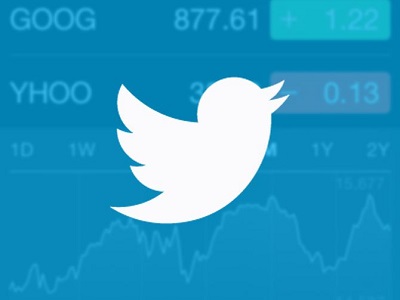Twitter has suffered its lowest revenue growth since its 2013 flotation, despite being the communication platform of choice for the new US President.

The microblogging service, which has never made a profit, reported a 1% rise in fourth-quarter revenue to $717m (£571m).
The figure failed to meet market expectations of $740m for the three-month period.
Twitter said its annual net loss had eased to $457m (£364m) from $521m the year before, despite quarterly losses widening.
It also warned that underlying profitability would take a hit in 2017 because revenue growth would continue to lag user growth amid stiff competition for advertising spending.
The social networking service reported a loss of $167m (£133m) in the final three months of 2016, as against $90m in the same period a year earlier.
There were 319 million active users, 4% up on a year earlier, but revenue from ads fell slightly to $638m.
It was the company’s slowest quarterly revenue growth since it became a publicly listed company in November 2013.
Some analysts had expected new US President Donald Trump’s widely publicised use of Twitter would give the service a financial boost.
But during a conference call, chief operating officer Anthony Noto dismissed the idea that the “Trump effect” had been a key factor in user growth.
He said that while Trump had shown “the power of Twitter” and broadened awareness of the service, it was hard for “an event or a single person” to make such a difference.
Its results statement said: “Advertising revenue growth may be further impacted by escalating competition for digital ad spending and Twitter’s re-evaluation of its revenue product feature portfolio, which could result in the de-emphasis of certain product features.”
It highlighted its commitment to revenue products that “strengthen our unique value proposition, especially in live and video”.
They have included big investments in live streaming of sport, with the aim of making its proposition more attractive to not only users but also advertisers.
It reported a 4% year-on-year jump in average monthly active users to 319 million in the last quarter – two million higher than the figure it had given in the July to September period.
That compares to a total of 1.9 billion Facebook users and more than 500 million on Instagram.
Twitter’s chief executive, Jack Dorsey, said: “We overcame the toughest challenge for any consumer service at scale by reversing declining audience trends and re-accelerating usage.”
That could be potentially explained by the frenzy over the US election – with President Trump a prolific Twitter user.
Dorsey said he expected growth to continue.
He added: “While revenue growth continues to lag audience growth, we are applying the same focused approach that drove audience growth to our revenue product portfolio, focusing on our strengths and the real-time nature of our service.
“This will take time, but we’re moving fast to show results.”
Its weaker underlying profit expectations for 2017 added to the pre-market stampede from its stock by investors as they were more than half the figure Wall Street was expecting, according to a survey of industry analysts by FactSet.
The plunge in its share price leaves the stock 35% down on the offer price set at its flotation in November 2013.
“Underlying structural problems”
Mark Skilton, of Warwick Business School, is a Professor of Practice in the Information Systems & Management Group and researches digital technology firms, commented on Twitter’s latest losses: “The continued performance failure at Twitter is part of an underlying structural problem and culture at the company and its inability to move beyond its early foundations as a simple microblog.
“Its 319 million user base is simply not engaged enough in direct revenue generation for the company.
“While investing in media streaming and niche changes to the website, Twitter’s management has failed to grasp the opportunities that Facebook and LinkedIn have taken in monetising their users by advertising or selling subscriptions for communities and lifestyles.
“Just like Myspace perhaps Twitter does not what to ‘change the formula’ for fear of losing its unique simple user experience, but the shareholders and CEO Jack Dorsey are running out of time. These figures will make it a target for a takeover if this slide continues.”
